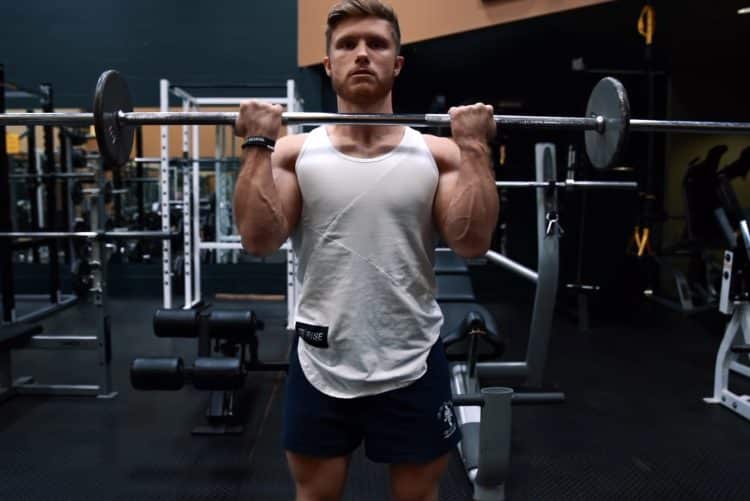Tag: build muscle
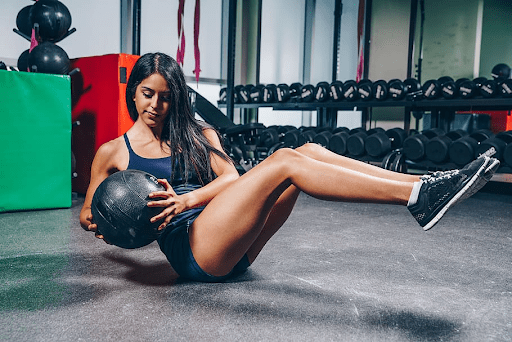
Core Workouts To Develop Abdominal Muscles
A strong, chiseled midsection with well-defined abs is a fitness goal that many aspire to achieve. Beyond the aesthetics, a strong core offers many benefits, from improved posture and reduced risk of injury to enhanced athletic performance and functional fitness. However, building a solid midsection requires a focused approach that combines targeted core workouts, […]
The post Core Workouts To Develop Abdominal Muscles first appeared on .

Nutritional Supplements: What to Take and Why
This article will explore the fundamentals of nutritional supplements and why incorporating them into your daily routine is beneficial. What are Nutritional Supplements? Nutritional supplements refer to products designed to enhance one’s diet and commonly consist of vitamins, herbs, minerals, and amino acids. These supplements are frequently linked to complementary and alternative medicine […]
The post Nutritional Supplements: What to Take and Why first appeared on .
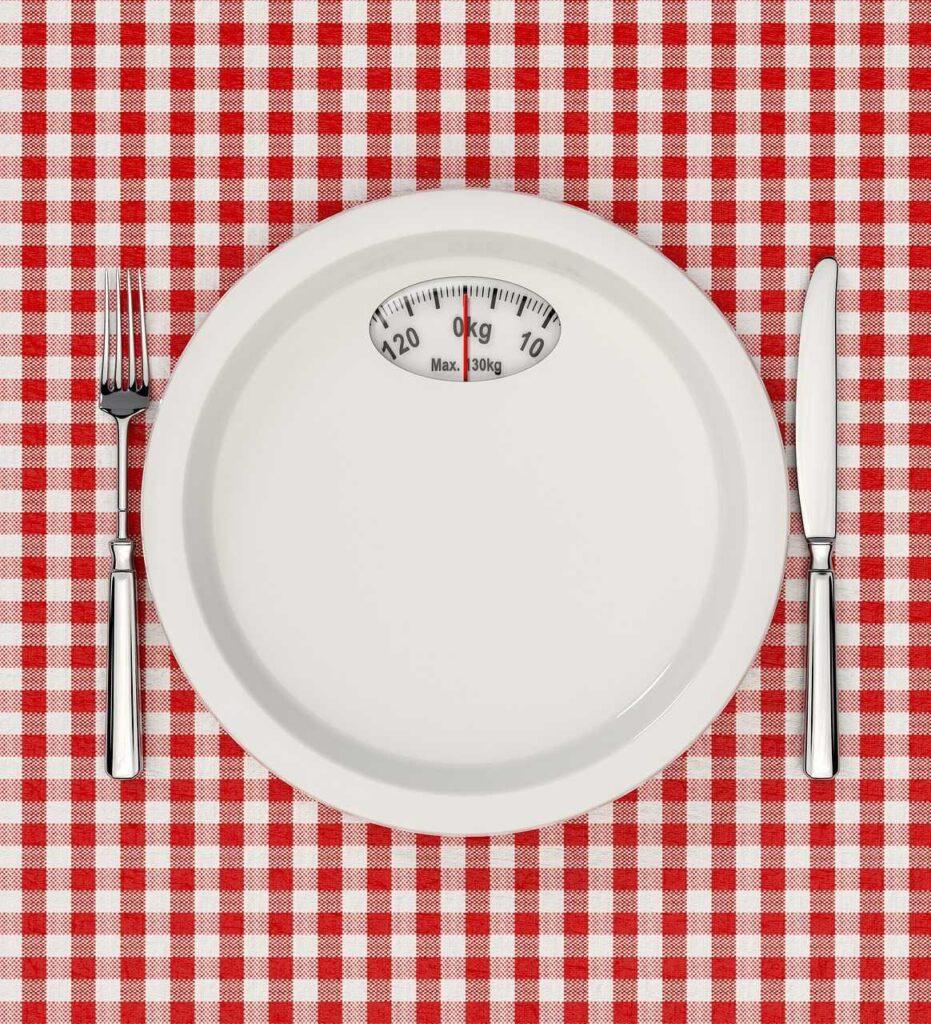
Understanding Calories and Ways To Cut Them
When you settle down for a meal, your hunger might override your concern for its nutritional balance. Understanding the fundamentals of macronutrients and their corresponding calorie content can assist you in crafting well-rounded meals. Although calories aren’t an ingredient in your food, they play a crucial role in comprehending what you consume. Equipping yourself […]
The post Understanding Calories and Ways To Cut Them first appeared on .

Body Recomposition Calculator
Body recomposition (body recomp) is the process of building muscle while losing fat. For many people, body recomp is the holy grail of training and nutrition, providing an alternative to the more traditional bulking and cutting cycles favored by many bodybuilders.
Most body recomp programs involve eating more on training days to fuel training and muscle growth but eating less on rest days to facilitate fat loss. This can be a tricky balance to achieve, which is why so many people experience less than stellar results during recomps.
After all, you need to know how much of which foods you should eat and when which usually involves a whole lot of number crunching.
Our body recomposition calculator is designed to take the guesswork out of eating for body recomp and does all the math for you.
Body Recomposition Calculator
Please fill out the form correctly
Male Female
Height
Exercise: Complete a minimum of 3 workout training sessions each week, each 30 Minutes per session.
Calculate
Result:
Training Days
calculated Calories Per Meal
Rest Days
calculated Calories Per Meal
If you would like to use this calculator on your website or blog you can simply embedded this
calculator in one click. Use the below ‘Generate Code’ tool to get the embedded code.
Generate Code
Read also: Body Recomposition – How to Lose Fat and Gain Muscle
What is The Body Recomposition Calculator?
The Body Recomposition Calculator is designed to determine how much you need to eat to build muscle while losing fat. It produces two sets of dietary targets – one for training days and one for rest days – so you can achieve your body recomp goals quicker and easier.
Hitting these targets will provide you with the energy and nutrients you need to train, recover, and build muscle without accumulating excess body fat.
It is customizable, so you can select things like meal frequency and primary training goal, choosing between gaining more muscle while slowly losing fat or losing more fat while gaining less muscle.
You can also modify the calculator according to your body fat percentage (if you know it) and your preference for high or very high protein intake. There is also an option to select plant-based proteins.
In short, it provides all the data you need to build muscle while losing fat.
How to Use the Body Recomposition Calculator
Our body recomposition calculator is very straightforward to use. Follow these step-by-step instructions to determine your calorie and macro intakes for training and rest days.
Select your units, choosing between imperial (pounds, feet, and inches) or metric (kilograms and centimeters).
Select your gender, choosing between male and female.
Enter your age, weight, and height.
Pick your formula, choosing between normal or lean mass, for which you’ll also need to enter your current body fat percentage.
Enter your additional weekly calorie expenditure, e.g., more than 3 x 30 minutes of strength training per week, which is the baseline for this calculator.
Select your body recomposition goal, choosing between more fat loss, more muscle gain, or equal fat loss and muscle gain.
Select your meal frequency, choosing between two to five meals per day. Alternatively, hit “all” to see your results for an entire day instead of meal by meal.
Select your protein intake, choosing from plant-based, high, and maximum.
Hit “calculate” and then read off your results.
How Does the Body Recomposition Calculator Work?
While our body recomposition calculator is very straightforward to operate, it uses a lot of hidden moving parts to determine how much you need to eat to lose fat and build muscle.
These are the steps and formulae behind the body recomposition calculator:
Calculate your BMR using the Mifflin St Jeor equation.
Multiply BMR by 1.2 to determine your maintenance calories.
Estimate your body fat percentage using the Mcardle-Katch body fat formula.
Adjust calories on training days based on goals (+20% for more muscle gain, +10% for more fat loss).
Adjust calories on rest days based on goals (-5% for more muscle gain, -15% for more fat loss).
Calculate protein intake at 0.95 grams per pound/2 grams per kilogram of body weight.
Calculate fat intake at 30% of daily calories.
Calculate carbohydrate intake as the remainder of calories.
Thankfully, you don’t need to do all this math as we’ve built each of these stages into our body recomposition calculator. You’re welcome!
Interpreting Your Results
Once you have entered all the required information and hit the calculate button, you’ll receive the following results:
Training Days:
These results represent how much you should eat on the days that you work out. They include a slight calorie surplus to fuel your workouts and promote recovery and muscle growth.
Calories per meal – this is how many calories each meal should contain. Calories are distributed evenly across however many meals you selected. If you selected “all,” calories are for the entire day.
Carbohydrate, protein, and fat – this is how much of each macronutrient group your meals should contain, presented in both grams and as a percentage.
Rest Days:
These results represent how much you should eat on rest days. They include a slight calorie deficit to facilitate fat loss and reflect that you’ll be less active.
Calories per meal – this is how many calories each meal should contain. Calories are distributed evenly across the number of meals you selected. If you selected “all,” calories are for the entire day.
Carbohydrate, protein, and fat – this is how much of each macro your meals should contain, presented in both grams and as a percentage.
If you are unhappy with your results, go back and make changes to things like meal frequency, formula, and protein type. This will fine-tune your results to ensure that you make the best possible progress during your body recomp.
Strategies for Maximizing Your Progress
Knowledge, they say, is power. However, that’s only true if you put that knowledge into practice. After using our body recomposition calculator, you’ll know precisely how much and what you should eat to lose fat and build muscle simultaneously. However, you also need to use this information correctly, otherwise it’s just empty words.
Use the following strategies to help you maximize your body recomp progress:
Create a Consistent Workout Routine
Consistency is the cornerstone of any successful body recomposition plan. You need to work out regularly and frequently to achieve good results. Strength training (lifting weights) is crucial for building muscle while losing fat, and the calculator is based on a baseline of three 30-minute strength training workouts per week.
You can work out with freeweights, machines, kettlebells, or your own body weight. However, whatever you choose to do, make sure you can stick to your program religiously. Missing workouts will hurt your progress.
You can design your own program or choose one of the hundreds of workouts in our archives.
Cardio can also help you lose fat, but you should avoid doing too much. Excess cardio can make it harder to gain/retain muscle.
Short, high-intensity interval training workouts are probably your best option. However, if you stick to the nutritional guidelines generated by the calculator, you should be able to lose fat without doing lots of additional cardio.
Track Your Calories and Macros
While you can guess your way to a successful bulk, body recomposition requires a much more precise approach to nutrition. Using our calculator means you know how many calories and macros you need to eat to lose fat while building muscle. So, make sure you align your meals to these targets.
Doing this means you’ll need to track both your calories and macros. You can do this with pen and paper, but using an online food-tracking platform or an app is much easier.
You’ll also need to plan your meals in advance to ensure you consume the right amount of calories, protein, carbs, and fat each day.
While this is time-consuming initially, it gets easier the longer you do it. Once you’ve calculated the values for a meal, you can save it and make it again without having to do all that adding and subtracting. After a week or so, you should have a good menu of meals tracked, and you won’t need to calculate calories and macros for them again.
Monitor Your Progress and Adjust Accordingly
Your body recomposition results are based on your nutritional requirements right now. In a few weeks, when your muscle mass and body fat percentage have changed, your dietary needs will have changed too.
So, to avoid progress plateaus, make sure you monitor your progress and adjust your food intake accordingly. For example, if you lose body weight, your total daily calorie requirements will decrease slightly.
You can also use these progress checks to ensure everything is going in the right direction. For example, suppose you are not noticeably losing fat. In that case, you may need to subtract an additional 100-200 calories from your daily intake.
Get Plenty of Sleep
Believe it or not, the amount of sleep you get per night can have a significant impact on your body composition results. Too little sleep inhibits fat burning, can interfere with workout recovery and muscle building, and rob you of the motivation and willpower you’ll need to train and eat consistently.
Most people need seven to nine hours of sleep per night. That’s EVERY night, and not just at weekends.
Sleeping enough ensures your body gets the time it needs to maximize muscle growth and burn fat.
Read more about how sleep influences fat loss and muscle building here.
Supplement Wisely
While you can build muscle and lose fat without supplements, a few well-chosen products may help things go more smoothly. Good options worth considering include:
Pre-workout – for an instant energy boost and longer, more intense workouts.
Protein powder – to make getting enough protein easier.
Creatine – a proven muscle-builder, energizer, and muscle cell volumizer.
Amino acids – to preserve muscle mass and promote recovery and muscle building.
Multivitamins and multiminerals – to make sure all your micronutrient bases are covered.
Fat burners – to accelerate fat loss and control your appetite.
Be Patient
If you want to gain muscle or lose fat fast, you should follow a bulking or cutting program. Focusing on just one aspect of body recomposition at a time usually produces quicker results.
However, after a bulk, you’ll invariably need to do a cut to lose the body fat you’ve accumulated. Similarly, you’ll probably need to do a bulk to rebuild any lost muscle after a cut.
Concurrent body recomposition is slower than bulking or cutting, but that’s the price you’ve got to pay if you want to lose fat and gain muscle simultaneously. So, settle into the long haul as your body slowly becomes lean AND muscular. Your patience will be rewarded!
Body Recomposition Calculator FAQ
1. How accurate is the body recomposition calculator?
Our body recomposition calculator estimates your total daily energy expenditure, creates a slight calorie surplus for training days and a calorie deficit on rest days, and then determines your macros based on the best percentages for body recomp.
It does this using accepted formulae for these purposes.
Like all such formulae, this is an estimation of what you need to eat to lose fat and gain muscle and is not 100% accurate.
Because of this, you should monitor your progress and fine-tune your nutritional intake based on your results. For example, consume more calories on training days if you aren’t building muscle and fewer calories on rest days if you aren’t losing fat.
2. What should I eat for my body recomposition meals?
There is no set diet for body recomposition, so you are free to plan your own meals. So long as whatever you eat fits your calorie and macro targets, you should make progress. This is called flexible dieting, or If It Fits Your Macros (IIFYM).
That said, you may make better progress if you eat mostly clean or natural foods. These tend to be the most filling, so you won’t feel hungry and tempted to break your diet.
Clean foods are also high in health-boosting micronutrients.
3. Am I allowed cheat meals while doing a body recomp?
Cheat meals provide you with a break from your diet. They usually involve eating foods you otherwise avoid during a restrictive eating plan. This can be psychologically rewarding and gives you something to look forward to.
However, too many cheat meals can sabotage your diet and put the brakes on your progress. Every time you miss your macro and calorie targets, the longer it’ll take to reach your body recomp goals.
So, enjoy cheat meals if you wish, but make sure you practice self-control to avoid doing more harm than good. Remember, too, that nothing tastes as good as being lean and muscular!
Use these strategies to stop cheat meals from ruining your progress.
4. What is the best workout for a body recomposition?
The aim of body recomposition is to build muscle while losing fat. As such, you need to do workouts that promote hypertrophy or muscle growth. Invariably, this means lifting weights and following a bodybuilding-style training program.
However, you’ll probably get the best results from a low to moderate-volume training program, as you won’t have the large calorie surplus normally need for a high-volume plan.
3-4 one-hour workouts per week should be sufficient for most people. Build your workouts around compound exercises like squats, deadlifts, bench presses, bent-over rows, pull-ups, and military presses. These exercises generally provide the best bang for your buck.
In terms of splits, sets, rep range, etc., whatever you want to use will work fine, providing you train with sufficient intensity and consistency. Create a program you can stick to.
Read more about what makes an effective training program here.
5. How long does a body recomp take?
You should begin to see progress in 4-8 weeks of starting your body recomp. However, the length of your body recomposition depends on how much fat you want to lose and how much muscle you want to build. For example, if you are very overweight or need to develop a lot of muscle, you could be body recomp-ing for many months or even a year or more.
While your progress will probably be slower than you want, take comfort in knowing that body recomp is a one-way journey, and you won’t have to follow it with a bulk or cutting phase.
Body Recomposition – Wrapping Up
Losing fat while building muscle cab be challenging, but, contrary to popular opinion, is not impossible. Bodybuilders and athletes have been doing it for centuries.
The trick to a successful body recomp is creating a small calorie surplus on training days and a calorie deficit on rest days. This will allow you to build muscle and lose fat simultaneously.
Take the guesswork out of creating a body recomposition diet with this handy calculator. Plug in your details and then consistently hit the calorie and macro targets.
While you won’t lose fat or build muscle quickly, you will make slow, reliable, steady progress toward your body composition goals.

Why You Should Use An Intra-Workout Drink During Your Workouts
Boost your workouts with the right intra-workout drink.
For those of us who engage in regular workouts, we all know those staple supplements to use, however, an intra-workout drink is something to take your gains to the next level. Pre-workouts, protein powders, creatine, and all of those other great supplements can work to build muscle, offer energy, enhance focus, and increase our overall strength in efforts to pump up our physique. But what about the middle of your workout?
It seems that supplements work on multiple fronts, whether that be our pre- or post-workout needs, but we often neglect to realize that much of our success comes during our workouts, and that is when our bodies need the most attention. What you will find with a great intra-workout supplement is the ability to push through fatigue and keep that energy high throughout the entirety of the workout. It can be debilitating to get into your workout only to lose energy, focus, and ultimately, motivation.
We’ll talk intra-workout supplements below and why it is necessary to use an intra-workout drink for those workout goals. With the right approach to all things intra-workout, you can better prepare yourself for what is to come during those grueling workouts.
What Is An Intra-Workout Drink?
An intra-workout drink is typically a supplement that you drink throughout the entirety of your workout in order to give you fuel and that extra boost needed to continue working hard. For those longer, more steady workouts, these can keep your body fueled to push through fatigue and keep you motivated to get that workout done. This could be a long run or bike ride for example.
Related: BCAAs vs. EAAs: Will They Help With Muscle Growth?
On the other hand, maybe your workout is a bit shorter and you need to focus on getting through it with as much energy as possible while also starting to build muscle. Intra-workouts, or at least the right one, can work well for you here. What is important for both of these here is that this supplement works to help kickstart recovery so you actually see those gains you want most.
Benefits Of An Intra-Workout Drink
The benefits of an intra-workout drink go a long way and can greatly impact all of those areas you need help with. What you will find with an intra-workout beverage is that you can better tackle those fitness goals while also keeping your health in mind with these many great benefits.
Benefits of an intra-workout drink include:
Better muscle growth: Work to repair, grow, and add new muscle tissue while aiding in the process of protein synthesis (1).
Less fatigue: Raise serotonin levels to keep energy high and not suffer from any fatigue (2).
Reduced muscle soreness: Lower enzymes that play a role in exercise-induced damage to improve recovery and alleviate any unwanted soreness (3).
Prevent muscle wasting: Help your muscles by restoring lost amino acids that keep your body primed and ready to go.
Sustained energy for longer sessions: For those longer training session, most likely cardio based, this will help with that sustained energy so you can complete your workout with no problem.
Kickstart recovery: An essential part of your routine, working to get recovery going is an important step to effective growth (4).
Related: When To Take BCAA Supplements For The Best Results
Why You Should Use An Intra-Workout Drink During Your Workouts
Bodybuilders and strength athletes, and any fitness goer who cares about results for that matter, can benefit from an intra-workout drink. Given the above benefits, it would be hard not to want to take this supplement as an effective way to see the best gains possible.
Muscle growth seems like a no brainer, given that is what we all want to see most, especially as we tone and work to develop our shredded aesthetics. On top of that, less muscle wasting ensures we keep on that lean muscle and don’t sacrifice any of those gains we work so hard for. Less fatigue and muscle soreness only ensure we continue to push hard through our workouts so we see the best gains possible while also taking advantage of a great workout routine.
Finally, and this is something many of us may take for granted, is the fact that this works to help boost recovery and kickstart that for the better. By taking advantage of recovery before you actually begin your process is one step into seeing massive gains that you may otherwise not see.
Are Intra-Workouts Safe?
Intra-workouts are generally safe for use, but it is important to always look at the nutrition label and make sure it is a product you should be taking given your lifestyle and health needs. Always consult a doctor or expert if you have further questions on if a supplement is right for you though.
Featured Intra-Workout Supplement
We wanted to share a great intra-workout drink and supplement that can help your gains come to life. A premium product will be worth taking and you will see great results.
National Bodybuilding Co. Pro Contest BCAA
National Bodybuilding Co. Pro Contest BCAA is great for improving strength, endurance, and recovery. Naturally sourced ingredients are put into an awesome formula for the best results.
National Bodybuilding Co. Pro Contest BCAA is one of those supplements you need to upgrade strength, endurance, and recovery faster than before. Naturally sourced ingredients and a side effect free guarantee, this formula will work to build muscle and recovery, stop muscle breakdown, boost athletic performance, and is great for all types of training. Tested and formulated from clinical studies, this supplement is safe for all your performance and recovery needs. By elevating your overall athletic lifestyle and keeping you going, National Bodybuilding Co. Pro Contest BCAA is the best for reducing fatigue and keeping you going strong.
Price: $38.00
Check out our list of the Best BCAA Supplements for more great intra-workout products!
Wrap Up
An intra-workout drink is something you can really benefit from as you look to capitalize on all your workouts. The right supplement can work for better muscle growth, enhanced energy, better focus, and will help kickstart recovery so you see the best gains. Check out a high-quality intra-workout drink today and work to boost your workouts.
Generation Iron may receive commissions on purchases made through our links. See our disclosure page for more information.
Let us know what you think in the comments below. Also, be sure to follow Generation Iron on Facebook, Twitter, and Instagram.
*Images courtesy of Envato
References
Negro, M.; et al. (2008). “Branched-chain amino acid supplementation does not enhance athletic performance but affects muscle recovery and the immune system”. (source)
Blomstrand, E. (2006). “A role for branched-chain amino acids in reducing central fatigue”. (source)
Shimomura, Yoshiharu; et al. (2006). “Nutraceutical Effects of Branched-Chain Amino Acids on Skeletal Muscle”. (source)
VanDusseldorp, T.; et al. (2018). “Effect of Branched-Chain Amino Acid Supplementation on Recovery Following Acute Eccentric Exercise”. (source)
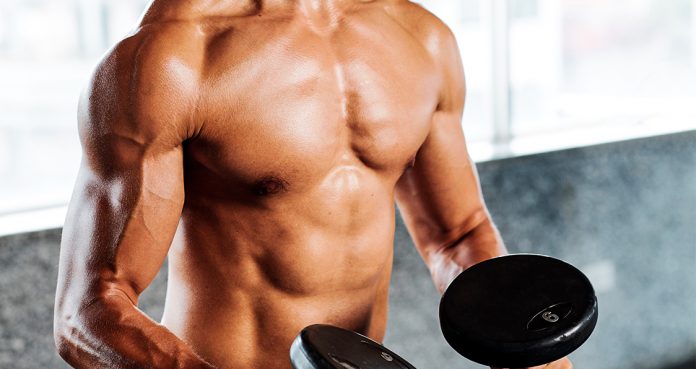
This is How You’re Stopping Yourself From Building Muscle
Avoid These Things to Build Muscle Mass
Going to the gym six days a week doesn’t guarantee you’ll build muscle mass. Without even knowing it, you might be doing a few things which could be acting as hurdles between you and your dream physique.
You build muscle when you do a series of right things. Going out of line in a single aspect can negatively affect your gains. In this article, we’ll be listing out five ways you could be stopping yourself from building muscle.
Lack of Recovery
Some people wear the “4-hour sleep a night” tag with pride. If your goal is to build muscle mass, you can’t afford to have anywhere less than seven hours of sleep every night. Your body recovers and puts on muscle size while you’re in deep sleep.
If you face sore muscles too often and can’t seem to recover from your workouts, you should consider using supplements to aid your recovery. Massages, stretching, Epsom salt baths are other effective recovery methods.
Generic Diet Plan
Following a custom diet plan is indispensable when it comes to building muscle mass. You can’t solely rely on making the right decisions when it comes to your daily meals. You should design a diet plan while keeping your daily calorie and macros goals in mind.
Getting professional help if you can’t build your diet plan can save you a lot of effort and time. For your diet plan to be sustainable, make sure it fits into your lifestyle so that you don’t have to make big sacrifices and adjustments to follow it.
Overtraining
When people don’t see results, they push harder, and it might do more harm than good. Overtraining can take a toll on your CNS (central nervous system) and can hamper your immune system.
If you take too long to recover from your workouts, chances are you might be in an overtrained state. Stopping training will be your best bet in situations like these until you get back on track.
Not Following A Customized Workout Plan
Most people take their workout programs too lightly and are happy following the free workout plans they can find online. You need to remember that no two people have the same genetics or muscle maturity.
Everyone has their strengths and weakness, and you need to device a workout program which works on building your weaker muscle group and polishes your strengths. Getting a customized diet plan will pay dividends in the long run.
Alcohol
If you’re on a timeline, drinking alcohol can act as a setback. As soon as you have a glass of your favorite poison, your body treats it just like that, a glass of poison. On alcohol consumption, your body slows down your metabolism and ramps up the fat storage in your body.
Alcohol is a source of empty calories and does nothing more than add layers of fat on your body. So, if you want to do a transformation, you might want to take your drinking down a notch or two.
Are you committing any of these sins? Let us know in the comments below. Also, be sure to follow Generation Iron on Facebook, Twitter, and Instagram.
Header image courtesy of Envato Elements
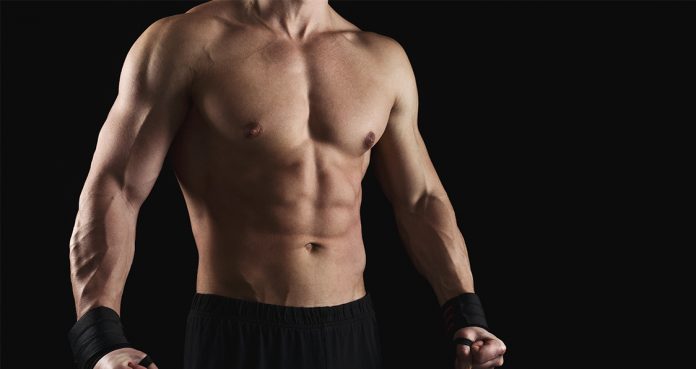
5 Ways To Build Muscle Outside The Gym and Recover Better
5 Ways To Improve Your Recovery and Build Muscle
Most people make the mistake of thinking that muscles are built while they’re working out in the gym. In reality, the opposite of this is true. You break down your muscle tissues while training and put on muscle size with the right recovery mechanism.
Some people overlook the role of rest and recovery in the muscle-building process and are frustrated when they don’t see results. If you can’t seem to build muscle even after following the right training plan, you’ve come to the right place.
Follow a Customized Diet
If your goal is to put on muscle mass or lose weight, you’ll have to follow a diet which is custom made for you. A customized diet plan is designed keeping your lifestyle, current and goal weight in mind.
No two people have the same lifestyle, goal or current weight and so following a vanilla nutrition plan isn’t going to do you any good. Keep your calories and macros (carbs, protein, and fats) in mind while designing your diet plan.
Kill The Stress Levels
An increase in stress levels is known to raise cortisol levels. A rise in cortisol levels can spike estrogen levels in men which can simultaneously lower the testosterone production. Testosterone is the male hormone responsible for the building of muscle mass and development of sex organs in men.
If you’re someone who can get worked up easily, you should figure out things which can help you calm down. Meditation, listening to calming music, going for walks, pleasure reading are a few things which many people find relaxing.
Focus on Your Sleep
Opposite of what people think, you build muscle mass or lose weight while you’re sleeping. Deep sleep allows for REM cycles to come into play, and optimize your release of testosterone while your muscles can truly rest.
If you want the optimal results, you need to make sure you’re getting anywhere between 7-8 hours of sleep every night. If you can’t get the total amount of hours in a single go, try taking a nap in the afternoon.
Reduce Your Soreness
Some of us love the DOMS (delayed onset muscle soreness) we get after a brutal workout. While muscle soreness should be experienced periodically, especially if you’re trying to break a plateau, it isn’t recommended to have sore muscles every day.
Epsom salt baths, morning, pre and post stretching routines are a few ways of dealing with muscle soreness. Light steady-state cardio can be incredibly effective in reducing soreness by improving circulation as it sends oxygenated blood to the muscles.
Take Your Foot of The Gas
Sometimes the best way to build muscle can be to not train at all. If you’ve been training hard for a long period, you might be at risk of overtraining. Being in an overtrained state can negatively affect your nervous system and can cause more harm than good.
Our last advice would be not to get too worked up if you’re not seeing the desired results. Building your mental health should be as much a priority as building your muscles. Be willing to take periodic rest whenever necessary.
Header image courtesy of Envato Elements
How many hours a night do you sleep? Let us know in the comments below. Also, be sure to follow Generation Iron on Facebook, Twitter, and Instagram.
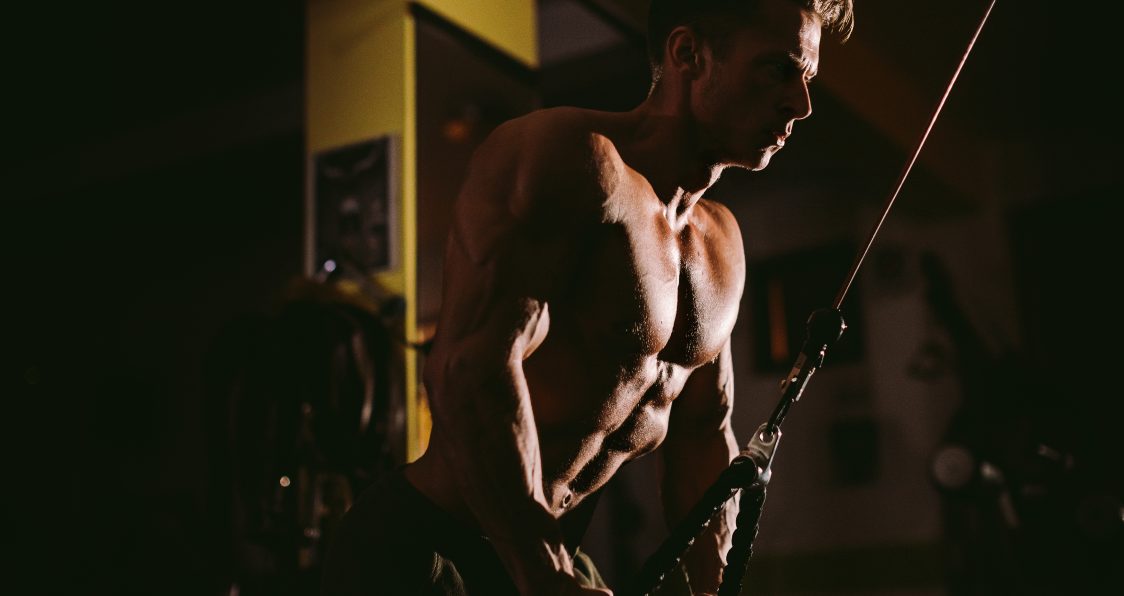
Best Muscle Group Training Combos For Bodybuilding
Know the right combination of muscles to train to ensure your bodybuilding gains are met and really work to get the most out of every workout.
Instead of wandering around the gym with no plan in mind, it is important for you to know what works best to maximize the full potential of your growth with your muscle groups. While ripping a quick set of bicep curls, hopping on the bench for a few decent reps, and hitting a body weight squat circuit might make you feel good, you won’t be actually benefiting your overall performance or individual muscle groups or any major muscle group, as well as smaller muscle groups, to make sure to see growth in your training.
To start seeing the success of muscle building depends on training the right muscles, at the right time, and with other muscle groups that aid in such growth. Pairing muscle groups that compliment each other will activate more muscle fibers and allow for more muscle in your workouts for maximum muscle group training for all muscle groups and sheer volume.
Work Those Stabilizer Muscles Out For Support
It is important to note that very few exercises truly target just one muscle, whereas many target different muscle groups. Although a major muscle may be the intended target, smaller ones surrounding it also benefits and provide support and act as stabilizers for the larger muscles. By combining certain muscle groups together that complement each other, you increase muscle mass, bone health, and begin that path to your desired physique. Working on the wrong muscle group together won’t totally destroy all gains, but you will not fully maximize the potential of your hard work put into the gym from all muscle groups.
The Benefits Of Combining Muscle Groups For Serious Growth & Performance
The bonus of combining certain groups is to work like-minded muscles with complimentary movements. A day off of recovery for that muscle group will allow the muscle to recharge to better target muscle growth. Compound exercises are those that involve more than one group of muscles and can increase efficiency, muscle mass, and weight loss.
However, if you want to start to strengthen muscle groups over the other, exercises performed in the beginning of the workout led to greater gains than those completed at the end (1).
Fatigue plays a role for those muscles worked at the beginning are fresher and more willing to lift more weight for muscle group training and intensity.
These muscle group combinations ensure you see big gains without sacrificing your overall health so as to not waste your time in the gym and be as effective as possible with all muscle groups. A simple change in your existing workout plan can go a long way in terms of benefits and gains for muscle group training with added intensity. Getting enough resistance from enough intensity quickly can ensure safe lifting for weeks and months as you build up enough muscle.
Chest, Shoulders and Triceps For Pushing Motions
The chest and triceps work together in most pushing motions that originate from the shoulders, so combining the three is the best choice. By keeping all three activated in the workout, the possibility for growth is undeniable and unavoidable, especially with great chest exercises, and even in the triceps and shoulders. While the bench will see greater muscle hypertrophy in your chest than the triceps (2), it’s important to recognize that both the triceps and shoulders still benefit from said exercise as opposed to just one muscle group or just one singular major muscle group or body part, as well as other smaller muscle groups incorporated in your training program for the best results to get in a week.
With the shoulders as a bridge to your chest and triceps, increasing mobility and size are key to keeping your upper half strong, stable, and free from injury. Put these three muscle groups together for an effective and efficient workout to train at least once per week to target different muscle needs through weight training so you can spend the time you want on them. Whether it be your shoulders or your chest, you can get at least one good exercise in a week to split your days between the other groups so your body can rest and enjoy the program designed for lifting big weights.
Exercises:
Incline Chest Press
Bench Press
Dumbbell Lateral Raises
Arnold Press
Dumbbells Triceps Kickbacks
Triceps Overhead Extension
Back, Biceps and Abs For Pulling Movements
This muscle group pairing is effective because the biceps assist the back with many exercises. For a lot of back day training, the biceps and arms offer the secondary movement being some sort of pulling motion in many ways. Whether it be a rowing motion, or one of pulling up or down, in the upper or lower arm, the biceps are essential for getting that back to where it should be so you start seeing that wing-like back along with those giant arms so they start working for your benefit.
While its true your biceps also activate the shoulders, which you would have included on a different day of training, it is vital to just maintain your form and know your limits to not over work them or other major muscle groups, especially your back and arms. Working your abs along with the back and biceps offers stability and can assist in injury prevention (3), so adding core exercises to this regiment is simply a must to also help with low back support. Along with those added benefits of balance and grip strength, you can get that more than desired six-pack abs to look and feel great while also promoting good back support for your overall body health along with rest and the best recovery to train at optimal capacity with heavy weights while ensuring efficient time working out.
Exercises:
Dumbbell Rows
Lat Pulldowns (with reverse grip)
Standard Bicep Curl
Hammer Curl
Preacher Curls
Plank
Crunches
Russian Twists
Hamstrings, Quads, Calves and Glutes For Lower Body Power & Explosive Strength
Training these muscle groups may seem obvious, but it is vital to keep working your legs. Your quads, hamstrings, calves, and glutes work as one to perform these compound motions so it is no surprise this combination works to your maximum benefit with workouts. Your calves, hamstrings and glutes help with hip and knee movements and your glutes offer added support to the hamstrings to flex the knees or extend the hip. Well-trained legs provide you with a strong back and core, but also that balance and stability to improve form in a variety of other exercises, some with just one single leg to work those calves and get them done. While leg day may not be as appealing as hitting a good, solid upper body workout, or whatever comes your way, it is vital to train your legs and keep a strong foundation in and out of the gym for major muscle groups and workouts in order to see proper rest as well from your legs routine for great workouts.
Exercises:
Bodyweight Squat
Bulgarian Split Squat
Barbell Hip Thrust
Machine Leg Curl
Step Ups
Cable Kickbacks
Standing Calf Raise
Seated Band Pushes
Wrap It All Up
More often than not we have a good handle on what muscle groups we want to work together. People will commonly work their chest and biceps and save the triceps and shoulders for the back. While you are likely to notice progress, a simple change of switching your back and chest days can boost your performance and strength by providing complimentary muscles groups to perform exercises more effectively. Regardless of what you decide, it’s important to have a plan in place to stay on track and continue to see that muscle growth you want and need while also staying healthy. Use leg days as a recovery tool for your upper half just as much as you are using them for building foundational strength to support and assist balance and stability. Try pairing these muscle group combinations together and love the results that follow for what you want and need to make people want to stare at all your progress.
Check out our Exercise Guide for other exercises and video instructions.
Let us know what you think in the comments below. Also, be sure to follow Generation Iron on Facebook, Twitter, and Instagram.
*Images courtesy of Envato
Resources
Simao, Roberto; Freitas de Salles, Belmiro; Figueiredo, Tiago; Dias, Ingrid; Wiilardson, Jeffrey M. (2012). “Exercise order in resistance training”. (source)
Ogasawara, Riki; Thiebaud, Robert S.; Loenneke, Jeremy P.; Loftin, Mark; Abe, Takashi (2012). “Time course for arm and chest muscle thickness changes following bench press training”. (source)
Hsu, Shih-Lin; Oda, Harumi; Shirahata, Saya; Watanabe, Mana; Sasaki, Makoto (2018). “Effects of core strength training on core stability”. (source)

Get Mass With These Killer Steroid Cycles
Q: Can you give me a few good cycles for mass building? Guys in the gym won’t touch me because I’m new and they don’t know what the deal is yet. I’m totally on the up-and-up, but I can’t find help. I’ve taken a few cycles back in my home state, but now that I’m in another state, I don’t know anyone. I didn’t really understand the first ones and why my buddies put them together the way that they did, so I don’t really have the ability to put one together on my own yet. Can you help?
A: First off, I’ll say that that’s common: new bodybuilders will get cycles from people and not really understand why something is the way it is. That’s an important part of the learning process. You should try to really understand why you are taking what you are taking before you do, since it will enable you to adjust as your body responds and doesn’t respond. I almost hesitate in giving you anything because of that fact – but I will give you a relatively mild cycle so that you can see why and how things work.
Currently….400mg Test E eod250mg Deca e/3rd day200mg Dbol ed20u’s of Apidra 5/2-off100-150mg of ephedrine training days only
If you are planning to stay on longer than 8 to 10 weeks, then you need to change some stuff up. I would say that you should add 100mg of Anadrol in for the Dbol in about 8 weeks, and change out Test Enanthate for Test Cypionate. Don’t forget to take PCT but that a whole other topic and you should probably know about it if you are taking mass cycles anyhow. HCG, Clomid, and Nolvadex are good.
After a 6 to 8 week break and good PCT, your next one, based on availability, can be:300mgs Tren (Trenboxyl E)500mgs of Sustaxyl
It’s a sound cycle and one you should stay on for about 10 to 12 weeks. Then follow that up with this for 10 weeks:50mg Stanoxyl Depot200mg Boldaxyl4IU Kalpatropin
Rotation and refreshing cycles by trading things in and out is key. Don’t stay on something too long without trading things in and out. It minimizes sides and it gives you the best growth for the dollar.
- 1
- 2

